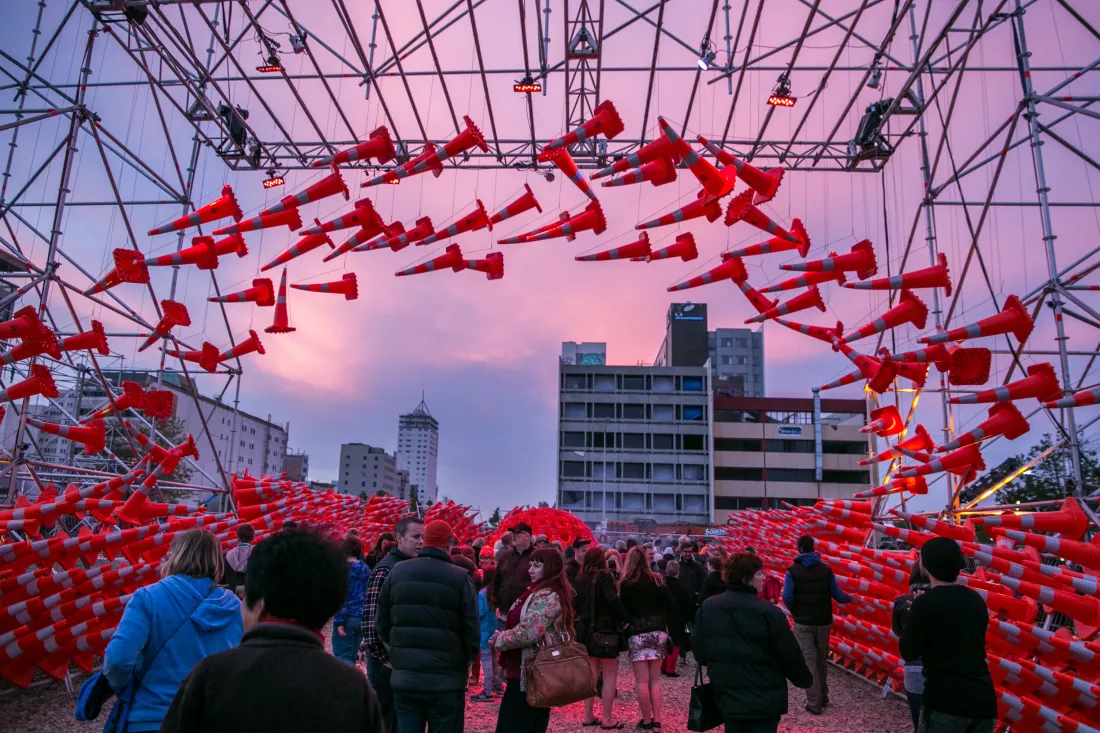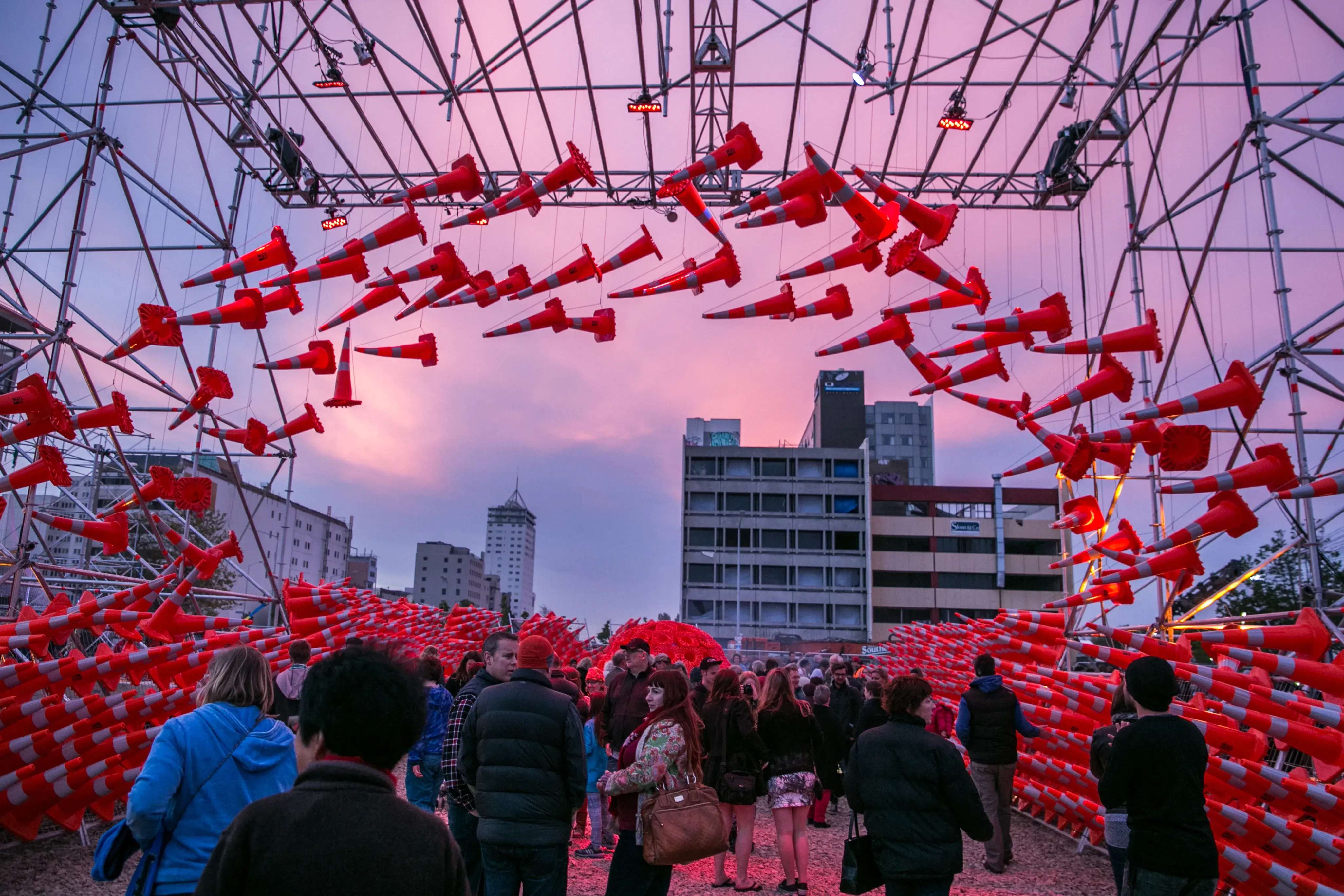Transitional city making
Written by


On the line from Christchurch, Jessica Halliday apologises for the noisy heater warming FESTA HQ at the NZ Institute of Architects Canterbury branch in a 1979 Miles Warren designed flat.
As an architectural historian Jessica is fascinated by the past and a concept the greenest building can be the one already standing.
“It’s been a challenge in Christchurch to watch people create a false dichotomy between the past and the future, as if one didn't inform the other, when of course they are part of a continuum.”
When buildings need to be demolished, the next best form of reuse is dismantling and repurposing the material. The theme for the 2016 Festival of Transitional Architecture, FESTA, ‘We Have the Means’ focuses on sustainability through reusing waste materials in design.
It reflects and builds on many of the projects in Christchurch, and joins an international conversation about urbanism and sustainability.
One example is Juliet Arnott’s Christchurch social enterprise Rekindle making furniture and objects from material salvaged from demolished homes, and the Whole House Reuse project recycling a red zoned Christchurch home into hundreds of objects.
A work at this year’s festival on Labour Weekend, Lost Christchurch, traces the fate of materials of Christchurch heritage buildings. The project is by Danielle Rose Mileo from the Melbourne School of Design, who had a degree in fine arts, before doing a masters in architecture, and advocates it as a pathway for architects.
As a historian Jessica is concerned that arts and architecture, once part of the same cultural sphere and thinking, aren’t as intertwined as they could be in New Zealand.
“I think we are poorer for it, they could challenge and support each other in really beneficial ways, so that's why we are testing it for FESTA.”
In a first this year the festival is integrating artists into the main event, Lean Means on 22 October, where inner city spaces will be transformed with installations fabricated from reused ‘waste’ materials by students from seven design and architecture schools from Australasia. In another first they are collaborating internationally, led by Creative Director Jos de Krieger of Superuse Studios, and bringing in three studios from Australia.
Artists with the means

Ara School of Architectural Studies - Zero Waste Village
This year with the support of Creative NZ grant, FESTA has weaved into the main event the work of three multidisciplinary contemporary artists from Christchurch - Juliet Arnott of Rekindle, artist Julia Morison and movement artist Julia Harvie.
Jessica says artists wanting to be part of the recovery and regeneration of the city can find it frustrating to find a way to work with designers, architects and the systems involved in production of public space.
“I honestly believe that we would be doing better if we made room for artists earlier in the development of the built environment.”
She was motivated to see how artists could explore their sense of themselves in relation to the recovery and regeneration of the city. Two of the artists are working with student design studios to create their work.
Artist Julia Morison is collaborating with School of Design at Massey University College of Creative Arts (Wellington) to create Pipe Dreaming.
Juliet Arnott is working on multiple projects, including Design.Craft.Enable.Value. Symposium as part of Resource: Rise Again.
Zero Waste Ōtautahi will launch at FESTA and continue with A Zero Waste Map and A Zero Waste Village of Resourcefulness. The village is a collaboration with Ara School of Architecture Studies in Christchurch, who are building temporary shelters designed and built from waste resources. It will house a set of skilled craftspeople using zero waste and natural materials, and be used for future pop-up markets.
Design Process

Christchurch artist Julia Morison (front right) working with the School of Design crew at Massey University College of Creative Arts in Wellington.
Working with an artist, on a real world project for FESTA, has other trickle downs.
Ara BAS year 2 leader Irene Boles says creating a work has deep meaning for the students based in Christchurch, and projects in the past have been ‘quite dark’ compared to others. This year as the theme moves to reuse they’ve been challenged to think differently. As the studio on the ground they also often get the biggest project. Working with Juliet has made the client relationship more real to balance expectations and reality.
“It’s an unprecedented unique learning experience,” says Irene.
For Massey they’ve rolled out a core paper, open to all third year design practices, to be involved in an interdisciplinary project, operating like a studio.
“Just like we've tried to dismantle boundaries between subject areas Julia also confronted us with the idea we would dismantle the boundary between artists and facilitators of the art. We’ve all become a linked up blurry explorator team,” says senior lecturer Nick Kapica.
Julia says the initial brief was for the students to build a pavilion for her work. “I wanted them to have ownership and value the process, their thoughts and ideas.”
It started by playing with materials and letting the ideas emerge instead of predicting an outcome. It also reflects what is going on in Christchurch, says Julia, with the tension of Government master plan or letting the city evolve with community engagement and public consultation.
Transition to city making

CityUps, a Studio Christchurch led collaboration for FESTA 2014. Photo / Peanut Productions
The concept of transitional was about bridging between the states of disaster, recovery and regeneration, projects that aren’t permanent but kept the energy focused on the community.
FESTA was one of many groups to evolve in post-quake Christchurch along with Gap Filler, Greening the Rubble and Life in Vacant Spaces.
As the city comes back online and new buildings are opened and occupied, it’s not just about a post disaster context, but a global development in urbanism for community connection and sustainable practice.
“City making is an all encompassing term that involves every small and larger act that makes a city. The move to that terms puts this transitional or temporary practice into that wider context, it is part of this complex beast of city making that can include architecture, development, public art, festivals and events,” says Jessica.
It’s a conversation that now continues throughout the year including ‘One Conversation, 100 Communities’ via Te Pūtahi – Christchurch centre for architecture and city-making, who evolved from FESTA and is now it’s umbrella organisation.
While there are important provocations that come to the fore at the bi-annual festival, like adding to practicing architects tool kits, informing future generations with new design methodology, Jessica reminds us it’s also about having a good time.
“Sometimes we joke FESTA is Christchurch’s biggest street party disguised as an architecture festival. We can’t downplay the importance of enjoying the company of other people and having a positive collective experience.”